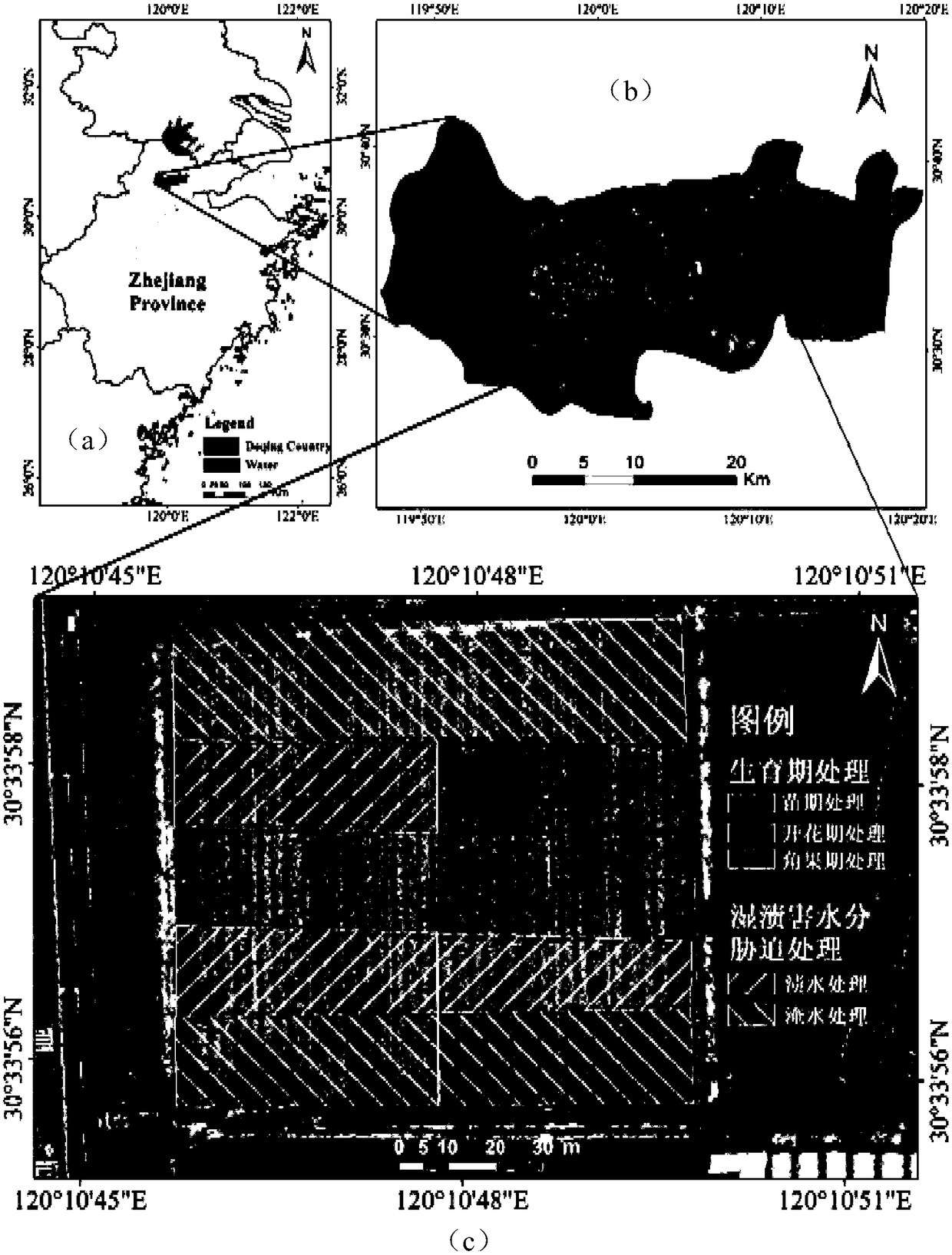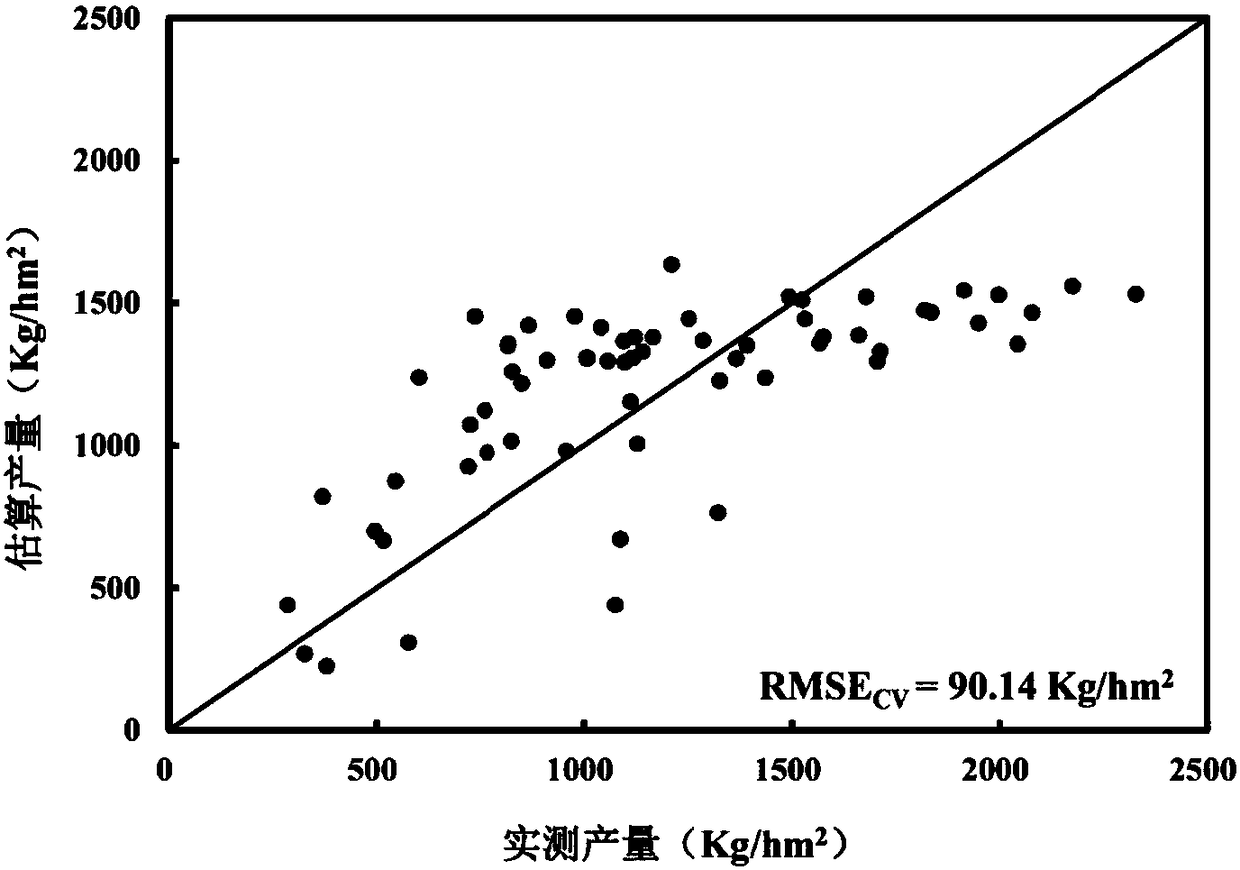Method for remote sensing quantitative assessment of yield loss of rapeseed under waterlogging damage stress based on satellite data
A satellite data and quantitative evaluation technology, applied in the interpretation of photos, etc., can solve the problems of yield loss caused by wet stains, increase the acquisition of satellites with high spatial resolution, and achieve the effect of improving model accuracy and ensuring availability.
- Summary
- Abstract
- Description
- Claims
- Application Information
AI Technical Summary
Problems solved by technology
Method used
Image
Examples
Embodiment Construction
[0047] The present invention will be further described below in conjunction with specific drawings and implementation examples. The present invention is a method for remote sensing quantitative evaluation of rapeseed yield loss at the block scale under waterlogging stress, and the specific calculation method includes the following steps:
[0048] Step 1: Carry out a plot-scale rapeseed wet-soiling field test, including: normal rapeseed plots and rapeseed-planted plots under wet-spotting stress, and wet-spotting stress at different developmental stages of rapeseed;
[0049] Step 2: Obtain satellite remote sensing data with high spatial resolution in different time phases, and perform preprocessing to resample satellite image data with different spatial resolutions to obtain satellite image data with the same spatial resolution;
[0050] Preprocessing specifically includes radiometric calibration, geometric correction, and atmospheric correction. After obtaining high-spatial-res...
PUM
 Login to View More
Login to View More Abstract
Description
Claims
Application Information
 Login to View More
Login to View More - R&D
- Intellectual Property
- Life Sciences
- Materials
- Tech Scout
- Unparalleled Data Quality
- Higher Quality Content
- 60% Fewer Hallucinations
Browse by: Latest US Patents, China's latest patents, Technical Efficacy Thesaurus, Application Domain, Technology Topic, Popular Technical Reports.
© 2025 PatSnap. All rights reserved.Legal|Privacy policy|Modern Slavery Act Transparency Statement|Sitemap|About US| Contact US: help@patsnap.com



